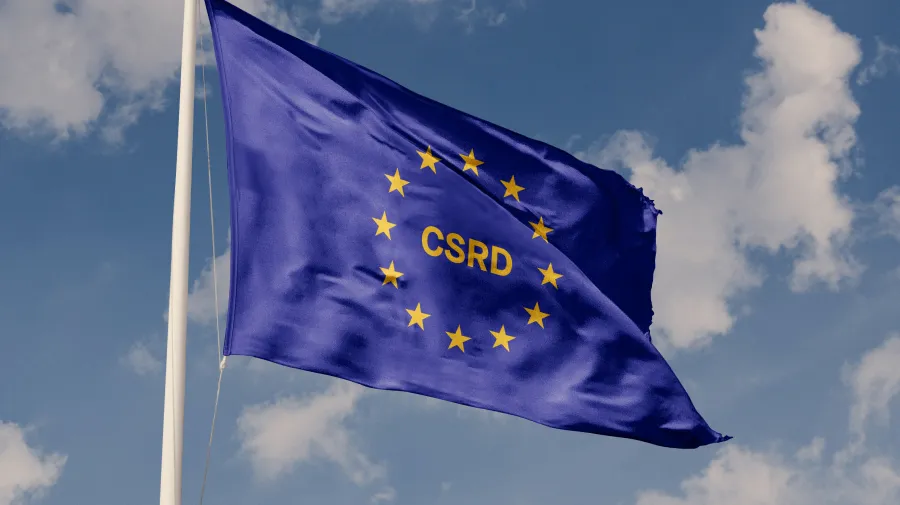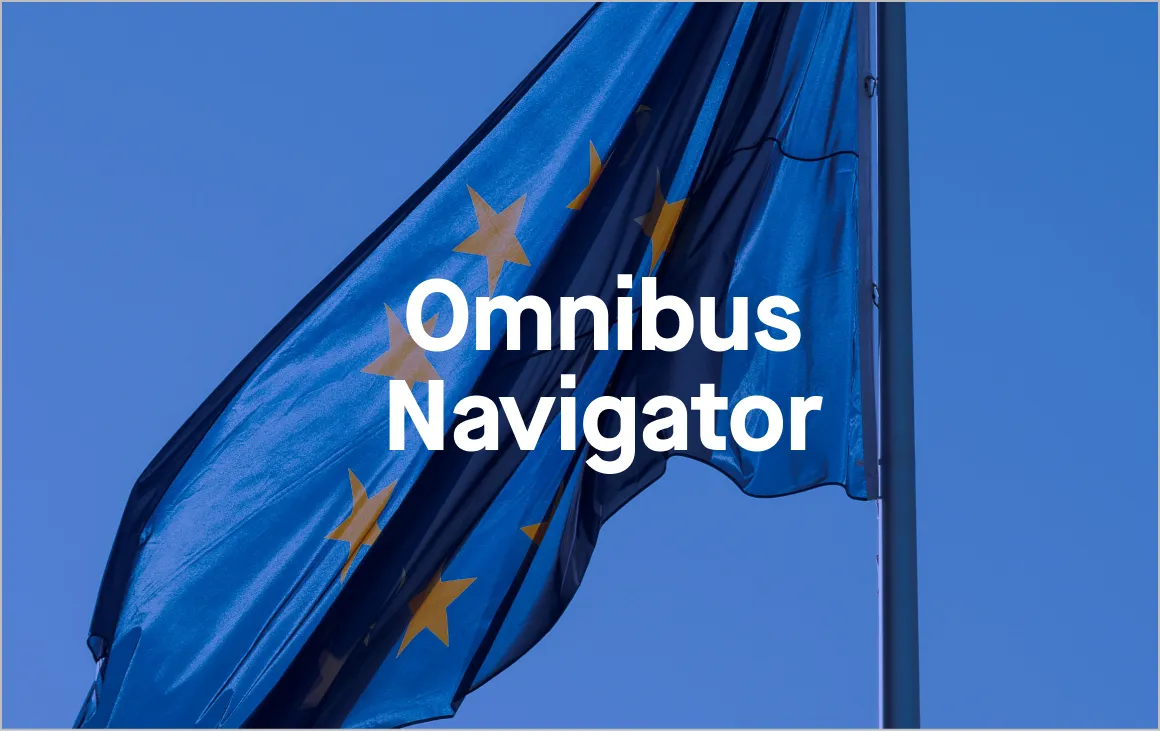CSRD and ESRS: A quick recap
The CSRD was designed to expand and improve upon the Non-Financial Reporting Directive (NFRD), with the aim of enhancing corporate accountability and transparency. It requires companies to disclose environmental, social, and governance (ESG) information alongside their financial results.
To standardize how these disclosures are made, the European Sustainability Reporting Standards (ESRS) were created by EFRAG (European Financial Reporting Advisory Group). These standards form the foundation of CSRD compliance and ensure consistency across all sectors and member states.
A timeline of CSRD development
- 2014: NFRD is introduced for large public-interest entities.
- 2022: CSRD is adopted to replace and strengthen NFRD.
- 2023–2024: ESRS finalized by EFRAG to guide reporting practices.
- 2025: Omnibus Proposal aims to revise and streamline CSRD obligations.
Double materiality assessment: still at the core
One element that will remain unchanged is the double materiality principle, which also relates closely to financial disclosures . This means companies must evaluate and disclose:
- Financial materiality – How ESG issues impact the company’s finances.
- Impact materiality – How the company’s operations affect people and the planet.
This approach ensures that sustainability reporting is both relevant for investors and stakeholders and reflective of real-world impacts.
What will companies need to report?
Regardless of proposed revisions, companies reporting in 2027 will be expected to provide clear, detailed, and verifiable sustainability data across three key ESG areas:
1. Environmental
- Greenhouse gas (GHG) emissions, including Scope 1, 2, and (where applicable) Scope 3.
- Energy use and efficiency measures.
- Water and waste management.
- Climate-related risks and adaptation strategies.
2. Social
- Workforce diversity, pay equity, and working conditions.
- Human rights policies and due diligence.
- Community engagement and social investment.
3. Governance
- Board structure and oversight of ESG matters.
- Ethical conduct and anti-corruption measures.
- Risk management frameworks and policy alignment.
In line with the Global Reporting Initiative (GRI) and the ISSB’s IFRS S1/S2 standards, CSRD reporting is designed to harmonize with global frameworks, offering businesses a cohesive and integrated way to report across jurisdictions.
How to prepare for 2027 CSRD compliance

For companies beginning their sustainability journey, 2027 may feel like a distant milestone. However, the scale and complexity of the CSRD disclosure requirements mean that early preparation is essential—especially for businesses that have never produced formal ESG reporting or those unfamiliar with the European Sustainability Reporting Standards (ESRS).
Building a robust foundation now can help organizations avoid last-minute scrambles, ensure accurate reporting, and make the most of sustainability as a performance driver. Below are six practical steps to begin the journey to compliance.
1. Conduct a gap analysis
Start by assessing your current policies, data systems, and sustainability disclosures against the ESRS. A detailed gap analysis helps identify areas that need improvement—particularly in areas like value chain data, social and environmental issues, and the integration of double materiality assessments.
The CSRD introduces a more comprehensive and mandatory approach to sustainability information, and many businesses will find that their existing disclosures don’t meet the expected depth or structure. Early identification of these gaps can guide strategic decisions and resource allocation.
2. Develop a data governance framework
Sustainability reporting is only as strong as the data behind it. Companies must establish strong data governance practices to ensure the consistency, reliability, and auditability of their sustainability metrics. This includes centralizing carbon emissions data, workforce diversity indicators, energy consumption, and governance practices.
Since CSRD disclosure forms part of the annual report, the integrity of ESG data must match that of financial data. This will be particularly important as limited assurance requirements begin in 2026, and companies must demonstrate that their information is complete, reliable, and aligned with ESRS expectations.
3. Engage key stakeholders
Complying with CSRD cannot be done in isolation. A successful approach involves cross-functional collaboration across departments such as finance, HR, legal, procurement, and operations, as well as engagement with other stakeholders . Externally, engagement with suppliers, auditors, and other value chain partners is critical.
Engaging these stakeholders early supports a more comprehensive understanding of risks posed by sustainability factors across the value chain. It also encourages ownership and accountability within teams, which is essential for collecting the sustainability information required and embedding ESG into day-to-day business operations.
4. Leverage ESG software
The technical and administrative burden of CSRD compliance can be significant. ESG software platforms are purpose-built to ease this load. The right tools can:
- Automate the collection and validation of ESG data from across your operations and supply chain.
- Map internal data against the ESRS to ensure reporting alignment.
- Facilitate stakeholder engagement through integrated survey and workflow tools.
- Enable digital tagging to meet CSRD’s structured data requirements for regulatory submissions.
- Generate audit-ready reports for third-party assurance providers.
By embedding technology into your reporting processes early, you can improve accuracy, reduce manual effort, and scale as new disclosure requirements emerge.
5. Prepare for assurance and verification
One of the more significant additions under the CSRD is the requirement for external assurance of sustainability information. From 2026 onwards, companies must obtain limited assurance for their disclosures, with the potential for this to expand to reasonable assurance over time.
Building a relationship with an assurance provider now will help you define clear validation processes and avoid delays as deadlines approach. This is especially important for areas where ESG data may be unstructured or spread across multiple business units or geographies.
6. Align with broader global frameworks
The CSRD doesn’t exist in a vacuum. Many of its principles—especially around double materiality assessment—reflect evolving global norms. Companies that align their CSRD compliance efforts with other leading ESG standards will benefit from a more streamlined and consistent reporting strategy.
Consider aligning your reporting with:
- GRI: For impact-focused disclosure and stakeholder-oriented communication on social and environmental issues.
- ISSB/IFRS: For investor-focused, financially material disclosures that align with international markets.
- Sustainable Finance Disclosure Regulation (SFDR) and EU Taxonomy: For financial market alignment and sustainable investment integration.
Using CSRD as a strategic anchor, companies can enhance their overall ESG reporting maturity and reduce the duplication of efforts across jurisdictions.
A note on reporting
In-scope businesses will need to disclose the sustainability information in their management reports, which means that financial and sustainability information will be published at the same time
What about non-EU companies?
CSRD compliance isn’t limited to companies based in the EU. Non-EU businesses must also report under the directive if they meet specific thresholds, such as:
- Generating more than €450 million in net turnover within the EU.
- Operating an EU branch or subsidiary that meets size and scope criteria.
- Being listed on an EU-regulated stock exchange.
For these organizations, CSRD presents additional challenges—particularly around cross-border data collection, jurisdictional alignment, and ensuring that companies comply with the new requirements. Adapting existing ESG frameworks to match the granular disclosure requirements of ESRS will require both planning and flexibility.
Why CSRD compliance is more than a legal obligation
While legal compliance is a core driver, forward-thinking businesses view sustainability reporting as a value-creation tool. High-quality CSRD disclosure enables companies to:
- Strengthen investor confidence by clearly communicating how they manage risks posed by environmental and social challenges.
- Build more resilient operations by understanding ESG risks across the value chain.
- Unlock access to green finance and sustainable investment funds.
- Improve internal decision-making by surfacing inefficiencies and sustainability opportunities.
- Enhance brand reputation through transparent communication of social and environmental issues.
Companies that integrate sustainability into core strategy—and not just compliance—will be better equipped to respond to evolving stakeholder expectations and shifting market dynamics.
Final thoughts: your roadmap to 2027
Although the Omnibus Proposal may delay compliance for some and reduce the scope for others, the core of the CSRD remains intact. The requirements for double materiality assessment, external assurance, digital tagging, and the inclusion of sustainability information in the annual report are not going away.
Organizations set to report in 2027 must start building their internal architecture now. This includes:
- Conducting detailed double materiality assessments.
- Establishing strong data governance.
- Engaging value chain partners.
- Investing in ESG software.
- Aligning with international frameworks.
- Preparing for assurance and audit requirements.
By taking these steps, companies can transform compliance from a regulatory burden into a strategic advantage—strengthening transparency, building trust, and advancing the transition to a more sustainable and responsible economy.






